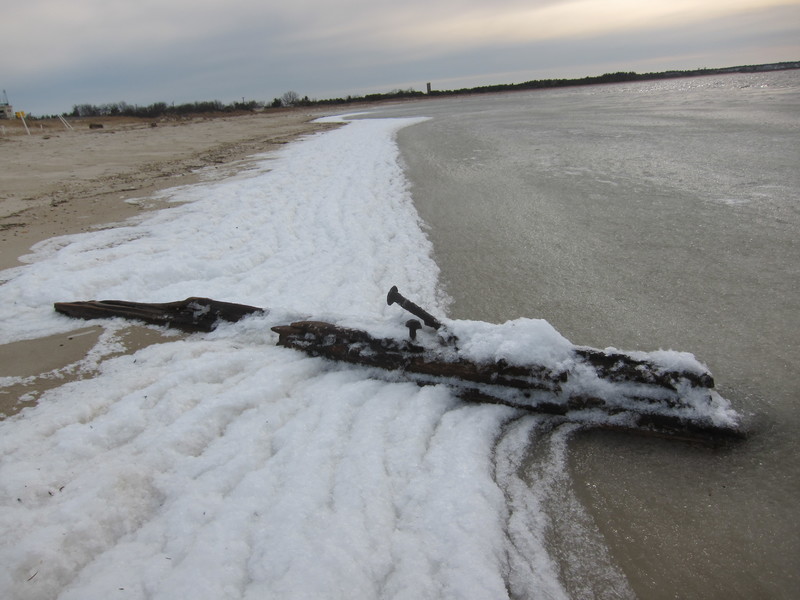Icy timber recalls the Great White Hurricane of 1888
Most of the weather systems affecting our area follow a clockwise pattern on the compass. North usually works its way around to the east and then the south and then back toward north again. For us here along the coast, those systems usually accompany fair weather.
When those patterns go against the clock on the compass, like hurricanes and nor’easters that spin their way up the coast from the south, they’re worth our attention. Such patterns usually spell bad weather. And it’s the northeast winds that come with those systems that hammer our coast the hardest.
That’s why, in 1829, when construction started on the Delaware Breakwater in the mouth of Delaware Bay, engineers oriented that second-largest-in-the-world (at the time) structure to provide a safe harbor against the nor’easters. The storms blew lots of commercial sailing freighters onto shoals along the East Coast, leading to great loss of life and property. Many of them were bound for Philadelphia, and the wrecks disintegrated the bottom lines of insurance companies in the City of Brotherly Love.
The breakwater provided shelter for thousands of ships over many decades until the vessels grew too large for the steadily shoaling water behind the wall.
Mid-March rain turns to snow
However, as predictable as nature can be in terms of spring, summer, winter and fall, her vagaries within the seasons can cause lots of trouble. That’s what happened 125 years ago in the late winter of 1888. A coastal storm tracking up from the south brought lots of wind and rain on March 11. They called it the Great White Hurricane because somewhere just north of the Delaware capes around midnight, the storm ran into a tremendous blast of cold air dropping down out of Canada. Temperatures running the week before in the low 50s quickly sank into single digits. The rain turned into snow - lots and lots of snow. Over the next day and a half, more than two feet fell in Delaware, while in New Jersey and New York just up the coast, the blizzard paralyzed the nation’s urban center with up to four feet of snow.
As was the case with Hurricane Sandy, Delaware caught the back side of the Blizzard of 1888. But in that storm, Lewes wasn’t so lucky. According to a Robert Lottman article in 2000 Journal of the Lewes Historical Society, the storm’s southeast winds swung around to the northwest as the storm worked its way up the coast. At the time, there were about 50 vessels anchored inside the Delaware Breakwater, which in that unusual situation became the unprotected side. “Blinding salt spray and then snow,” wrote Lottman, “froze into white masses on the hulls and shrouds of the tossing ships. By the storm’s end, only 15 of the 50 vessels remained afloat.”
Lottman’s article recounts the efforts of crews of the Lewes and Cape Henlopen Life-Saving Stations. Aided by volunteers from the town who thawed frozen lifelines by the stove in the Lewes station, the crews went into sleepless duty with their surfboat launches. They rowed toward the wreckage, straining their backs against the seas and the snow of the westerly gale, righting their course when blown broadside by 90-mile-per-hour gusts, risking wrecking themselves as they drew close enough to “cast lines to survivors who clung, frost-bitten, to the rigging” of the foundering vessels.
The heroism of the rescuers brought an estimated 178 passengers and crewmen safely to shore. Despite their efforts, the storm claimed at least eight lives in Lewes Harbor. Hundreds more throughout the mid-Atlantic also perished.
Even though the groundhog didn’t see his shadow this year, and our spirits naturally brighten with lengthening days, history warns us that nature - especially along the coast - can still conspire with winter to throw fatally hazardous weather our way before spring arrives.



















































